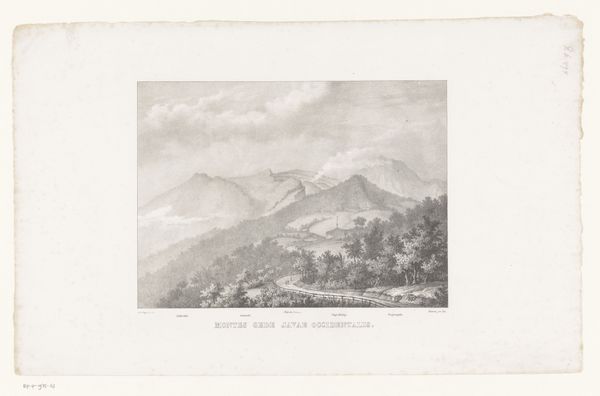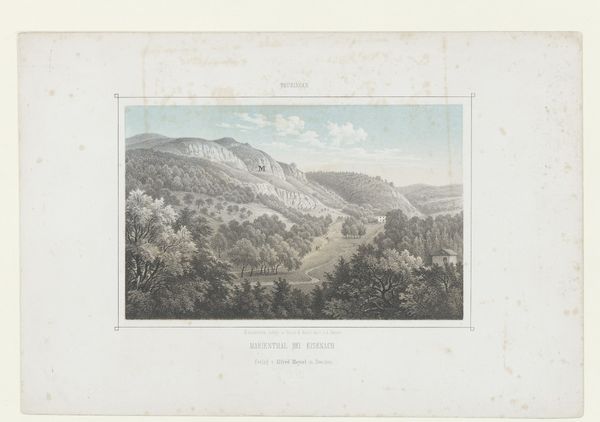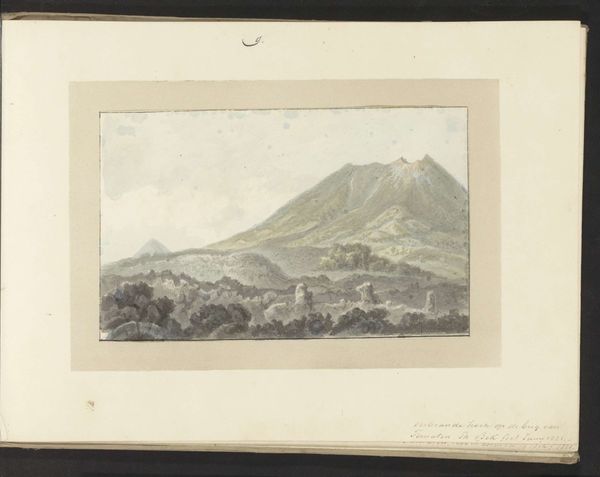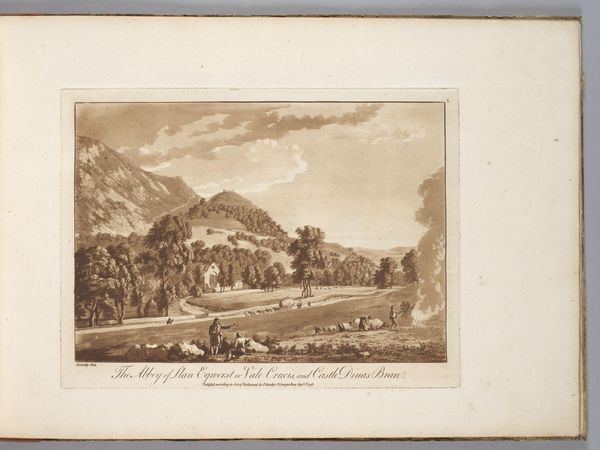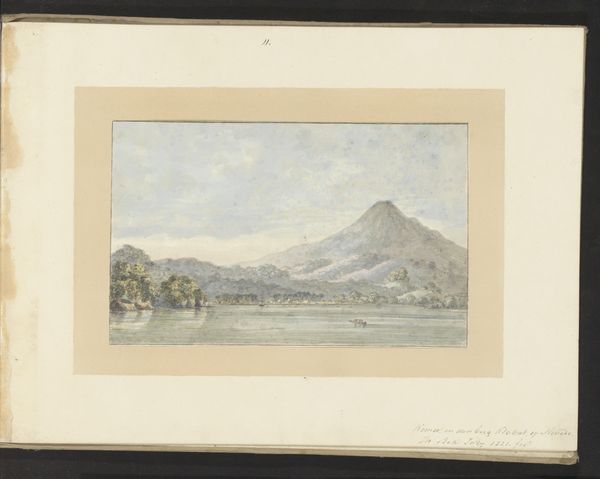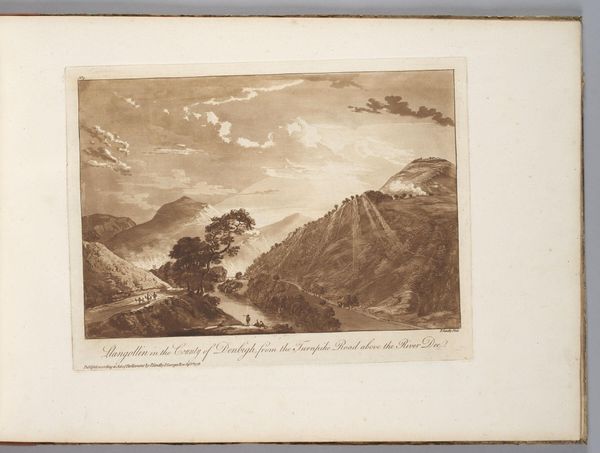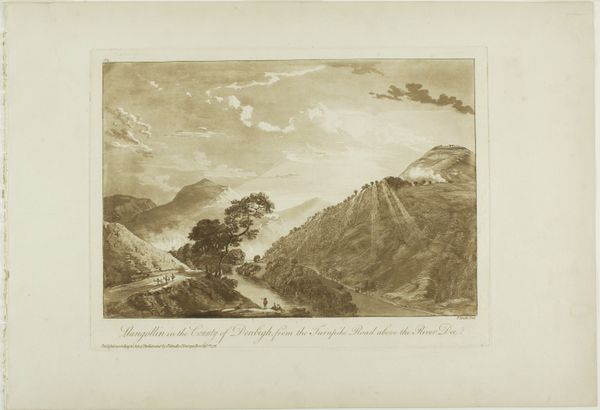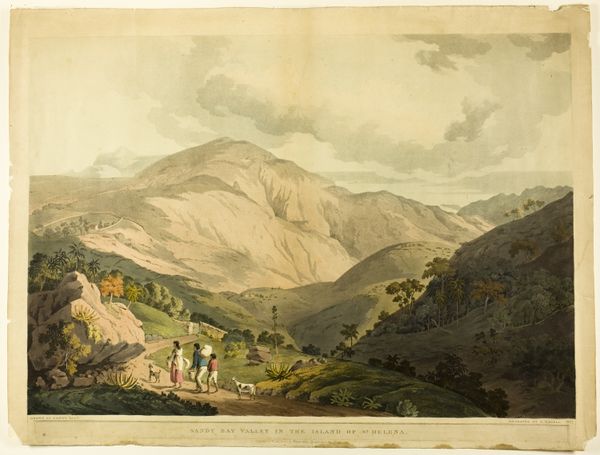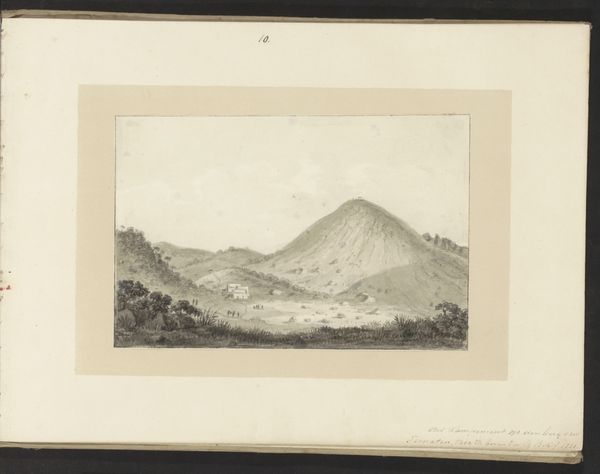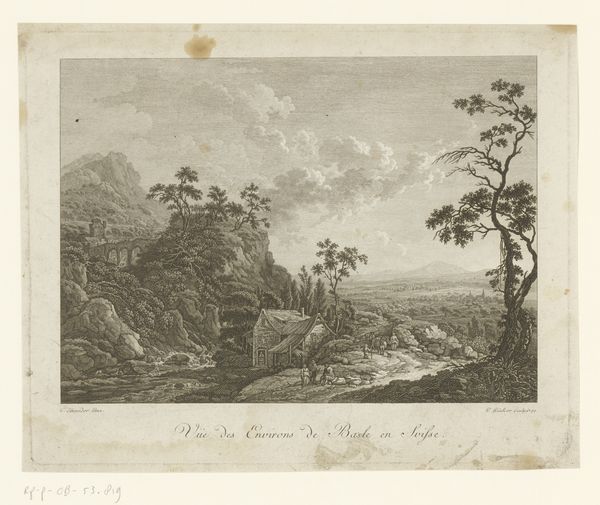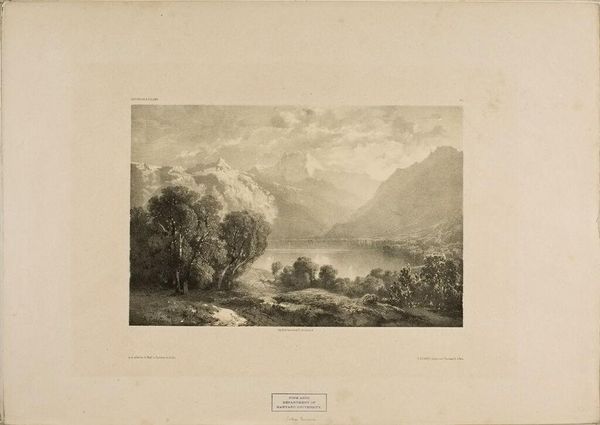
coloured-pencil, plein-air, watercolor
#
coloured-pencil
#
plein-air
#
landscape
#
watercolor
#
coloured pencil
#
romanticism
Copyright: Rijks Museum: Open Domain
Editor: Here we have "Gede, vulkaan op West-Java," created by A. Pagen in 1821, using watercolor and coloured pencil. It’s quite a subdued landscape; I notice how the path draws your eye into the scene. How do you interpret this work? Curator: Focusing on its materiality, notice the combination of watercolor and coloured pencil. It’s not simply about rendering a picturesque view. The artist's choice of these readily available materials hints at the constraints and opportunities present during the early 19th-century documentation of colonial landscapes. Think of who was commissioning the works, and with what resources they were equipped. Editor: So, you are suggesting it's less about artistic expression and more about the resources available? Curator: Not entirely. But considering that the 'plein-air' designation puts the artist right in the environment, making choices on site given environmental conditions is something to reflect on. Why watercolour instead of oil, for example? Perhaps portability was prioritized over long-term vibrancy. Then ask yourself, who were these images for? Did the artist feel the need to impress, or simply inform? Editor: That’s interesting. I hadn't thought about the constraints influencing the aesthetic. Was there a market for these pieces back then? Curator: Absolutely. European audiences were fascinated by the exotic ‘East Indies.’ Prints and illustrated books, reproduced from originals like these, fuelled that demand. They also shaped perceptions. Editor: So the image functions almost as a commodity itself, circulating an idea alongside the pigments and paper it is comprised of. Curator: Precisely. Thinking about the networks of production, consumption, and representation gives us a more grounded understanding of the artwork beyond its aesthetic appeal. It moves it from the realm of pure art to one embedded within very tangible social and economic conditions. Editor: I see it now, examining those materials and their context really opens up another way to understanding the artwork.
Comments
No comments
Be the first to comment and join the conversation on the ultimate creative platform.
